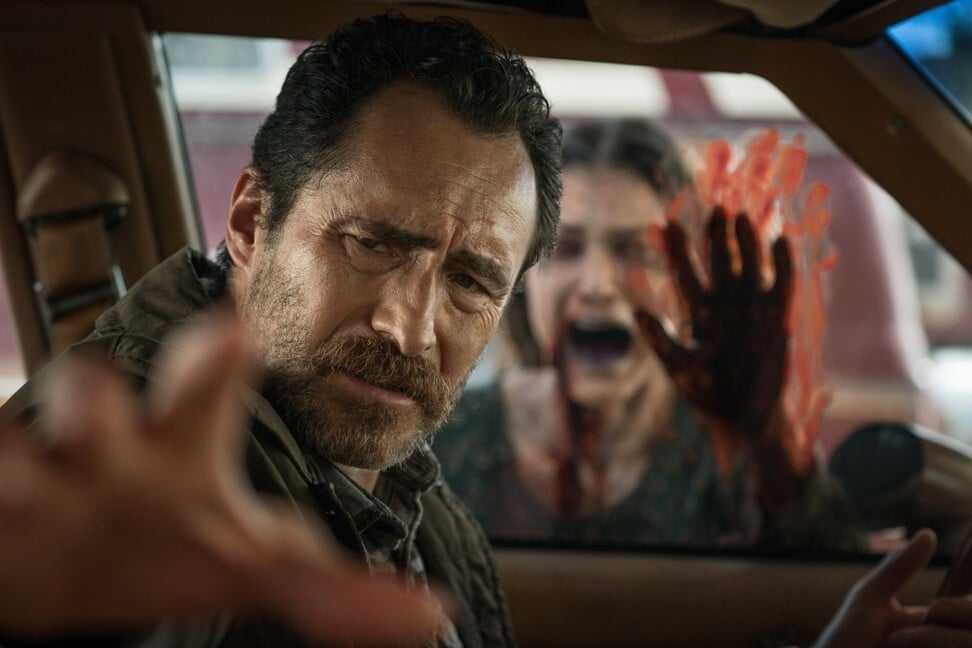
How Ju-On: The Grudge creator Takashi Shimizu turned one scary premise into a horror franchise that’s spanned decades
- When Shimizu was asked to create a series of creepy shorts for a mobile phone company, little did he know it would spawn a horror dynasty
- Having started with a TV movie called Ju-On: The Curse in 2000, the franchise comprises books, a TV show and a video game, as well as movies
For those in the business of creating things, to be remembered for anything at all is an incredible achievement. And yet, across a long enough career, to be remembered for just one thing must be incredibly frustrating, so it’s no wonder that most artists prefer their unsung works.
No matter how many films he makes, Japanese writer-director Takashi Shimizu will be always be billed as the architect of the Ju-On series, which began more than 20 years ago and comprises not just movies but books, a TV show and a video game. Ironically considering its success, the franchise concerns a curse that spirals exponentially outwards and cannot be stopped.
Born in Maebashi, Japan, in 1972, Shimizu enrolled at the Film School of Tokyo, where a short film of his attracted industry attention. It was when he was asked to create a series of horror shorts for a mobile phone company that he came up with the idea that would come to define his career.
The series of short videos spawned a 2000 TV movie called Ju-On: The Curse – the film that marks the start of the franchise. A sequel came out the same year, before the cinematic release of Ju-On: The Grudge in 2002, which was itself followed by a sequel in 2003. Each film follows a similar format.
In the Nerima district of Tokyo is a house where jealous husband Takeo Saeki (Takashi Matsuyama) killed his wife Kayako (Takako Fuji), son Toshio (played by various actors) and Toshio’s cat (also various). As the title card explains, “When a person dies with a deep and powerful rage, a curse is born.” The curse, in this case, is that the ghosts of Kayako and Toshio come to claim anyone who sets foot in their former home.
Usually, this means the white-faced, broken-limbed Kayako popping up in all kinds of domestic safe spaces – including under one poor victim’s bedsheets. Her appearance is signalled by her trademark groan, a deep, guttural sound that was performed by Shimizu himself and should carry a trigger warning.
Bangkok Dangerous: how not to remake your film for Hollywood
Inventive and profoundly scary, Ju-On: The Grudge surfed the first wave of J-horror to international success.
“It was very surprising, as it started as a micro-budget straight-to-video project,” Shimizu told Eastern Kicks. “I am still amazed now if I think about how it all happened. Like I said, this has become my most known work and because of that I keep being offered horror projects and people think I am a horror kind of guy.
“I need to break this public image as soon as possible by making films far from horror and surprising people.”
I don’t know if I am capable of handling a romantic comedy, but if I get an opportunity, I would like to give it a try
That isn’t quite what happened. For his Hollywood debut, Shimizu was invited to direct an American version, called The Grudge (2004), for Sam Raimi’s Ghost House Pictures. Starring Sarah Michelle Gellar, best known for her role in TV series Buffy the Vampire Slayer, and set in Tokyo, it managed to retain some of the atmosphere of the original film.
Still, it was less subtle than its not-exactly-subtle source material, with sledgehammer sound design, CGI distractions and a huge jump scare before the opening credits.
Shimizu explained the different cultural requirements to Dread Central: “In America if there is a ghost in a film they attack you and that is how people get scared. In Japan if a ghost appears and it is just there we get scared. Just because it’s there.”

It’s at around this point that Shimizu’s career branched off in two different directions. In Japan, he was making interesting genre films such as Marebito (2004), a Lovecraftian look at a netherworld beneath Tokyo, and Reincarnation (2005), perhaps his best work outside the Ju-On franchise.
The latter follows a film crew making a movie about a historical hotel massacre (including a witty nod to The Shining ), and shows them haunted by ghosts, on and off the screen. Like Ju-On, it uses themes of repetition and replication to suggest a past that cannot be escaped.
Internationally, Shimuzu made The Grudge 2 while struggling to maintain his enthusiasm. “It is very difficult to keep it fresh, and you know, since I’ve been doing this so many times, I feel like I’m just repeating things over and over,” he lamented to IGN.

Since then, he has combined inventive but disappointing Asian films such as The Shock Labyrinth 3D, based on a theme park ride, with negligible US releases such as Flight 7500 (2014), about a supernatural entity on a plane. The last few years have seen him back on home turf, making movies like Howling Village (2019) which continue to probe the dark side of Japan.
A romantic comedy from the creator of Ju-On: The Grudge? Now that could be something we never forget.

In this monthly feature series exploring Asia’s impact on international cinema, we examine how the continent’s directors have fared in Hollywood, whether its most popular films survived the remake process – and at what cost.
Want more articles like this? Follow SCMP Film on Facebook

